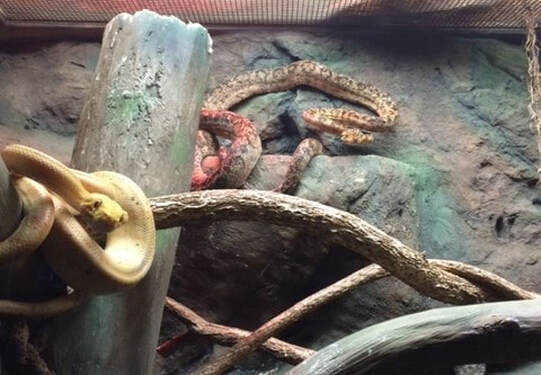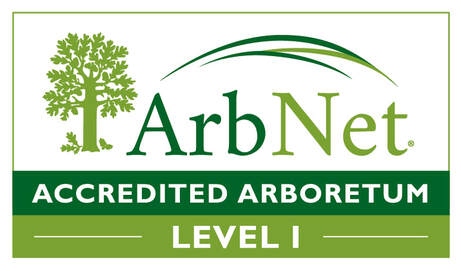Amazon Tree Boa (Corallus hortulanus)The Amazon Tree Boa is nonvenomous but very aggressive. They have long, needle-like teeth that can inflict a painful bite. They are one of the most colorfully diverse snake species
Amazon Tree Boas are sometimes called Garden Tree Boas. Learn more about Amazon Tree Boas by clicking the tabs below. |
DESCRIPTION
Amazon Tree Boas have a very thin body and a large, triangular-shaped head with long, sharp teeth and large, bulging eyes. They can be found in a wide variety of colors and patterns. The base color varies from pale tan to black with tinges of yellow or red. Amazon Tree Boas are also marked with repeated blotches or bands of color. Their eyes can be yellowish, grayish, or reddish, and they have a reflective membrane that results in eyeshine at night. Their tongue is black.
The Amazon Tree Boa can grow to between 5 feet and 7 feet in length. Males and females are similar in size. The average weight of an adult is between 1 and 3 pounds. A distinctive feature of the Amazon Tree Boa is small, claw-like remnants of vestigial hind limbs in the cloacal region.
They are sensitive to vibrations, which is a location device they employ. They have excellent daytime eyesight. At night they have very large infrared pits near their lips that they use to detect heat signatures. They also have good chemoreception, which is mostly used for communication purposes.
Amazon Tree Boas are ambush hunters. They sit on a branch with the front part of their body hanging in an S-shaped curve from the branch. Because of their long bodies they strike at prey a significant distance from themselves. The Amazon Tree Boa often pushes prey off a tree branch as they strike and then they gather the body of the prey in several of its coils. They are constrictors so Amazon Tree Boas suffocate their prey and then swallow it whole head first.
The Amazon Tree Boa can grow to between 5 feet and 7 feet in length. Males and females are similar in size. The average weight of an adult is between 1 and 3 pounds. A distinctive feature of the Amazon Tree Boa is small, claw-like remnants of vestigial hind limbs in the cloacal region.
They are sensitive to vibrations, which is a location device they employ. They have excellent daytime eyesight. At night they have very large infrared pits near their lips that they use to detect heat signatures. They also have good chemoreception, which is mostly used for communication purposes.
Amazon Tree Boas are ambush hunters. They sit on a branch with the front part of their body hanging in an S-shaped curve from the branch. Because of their long bodies they strike at prey a significant distance from themselves. The Amazon Tree Boa often pushes prey off a tree branch as they strike and then they gather the body of the prey in several of its coils. They are constrictors so Amazon Tree Boas suffocate their prey and then swallow it whole head first.
RANGE
Amazon Tree Boas are native to South America. They occur naturally in the Guianas, Amazonia, and south-eastern Brazil (to the Tropic of Capricorn).
HABITAT
Amazon Tree Boas are arboreal which means they live in trees. They prefer humid climates like rain forests but they can also be found in savannahs and dry biomes.
DIET
Carnivores – small mammals, frogs, birds, and small reptiles.
FAMILY LIFE
Amazon Tree Boas are ovoviviparous which means they bear live young rather than laying eggs. Females usually give birth to between 8 and 14 young per litter once a year. The young are independent of their mother at birth and there is no parenting by either parent. Other than during breeding season they are solitary creatures.
LIFE SPAN
Their average lifespan in the wild is 15 years. In human care the average is 20 years.
STATUS
Least Concern







